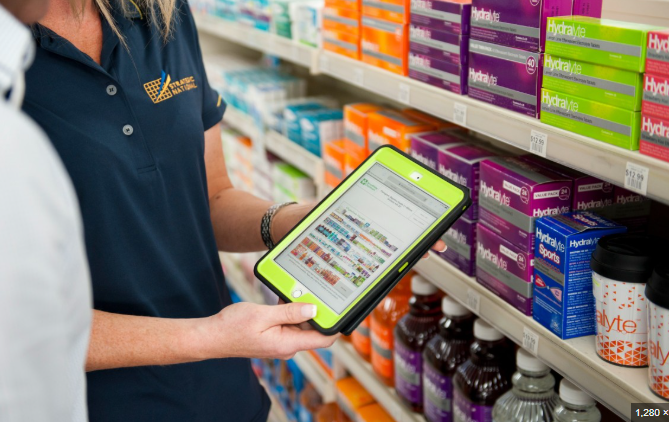What is Planogram Compliance and Why is It Crucial for Retail Success?

Picture this: you walk into your store, confident that your latest planogram will drive more sales and optimize the shopping experience. Yet, when you check the shelves, you find products misplaced, empty spaces, and displays that don’t match the carefully crafted plan you designed. You’ve invested time, effort, and resources into creating the perfect layout, but the lack of planogram compliance is undermining your efforts.
This kind of frustration is all too common for retailers, as maintaining consistent product placement across multiple locations or shifts can feel like an ongoing battle. But here’s the reality—when planogram compliance is ignored, it directly impacts sales, customer experience, and operational efficiency. Ensuring that products are displayed according to the planogram is not just a guideline; it’s a critical component of retail success.
In this article, we will explore why planogram compliance matters and how it can be the key to unlocking greater profitability and customer satisfaction.
Understanding Planogram Compliance
A planogram serves as a visual blueprint for product placement within a store, outlining the exact location and quantity of each item on the shelves. Planogram compliance refers to the degree to which a store adheres to these predetermined layouts. It ensures that the merchandising strategy is executed as intended, facilitating a consistent shopping experience across all retail locations.
The Importance of Planogram Compliance in Retail Success
In the competitive retail landscape, every detail matters when it comes to driving sales and ensuring a positive customer experience. One of the most important elements that often gets overlooked is planogram compliance. Planograms not only guide product placement but also serve as the backbone of a store’s merchandising strategy. Let’s delve into why maintaining strict adherence to these layouts is crucial for retail success.
- Enhancing Customer Experience
When products are systematically organized and placed according to planograms, customers can easily locate what they need, leading to a more satisfying shopping experience. Proper product placement also influences purchasing behavior, encouraging impulse buys and increasing overall basket size. - Optimizing Inventory Management
Adhering to planograms helps in maintaining optimal stock levels by preventing overstocking and understocking. It streamlines the replenishment process, ensuring that popular items are always available, thereby reducing lost sales opportunities. - Increasing Sales and Profitability
Strategic product placement directly impacts sales. Studies have shown that products positioned at eye level or in high-traffic areas experience higher sales volumes. By maintaining planogram compliance, retailers can capitalize on these insights to boost profitability. - Maintaining Brand Consistency
Uniform product placement across all store locations reinforces brand identity and fosters customer loyalty. Consistency in store layouts ensures that customers have a familiar shopping experience, regardless of the store they visit.
However, maintaining this consistency can be challenging, especially across multiple locations. To address these challenges, retailers need to implement strategies that ensure adherence to the planogram.
Challenges in Achieving Planogram Compliance
Retailers often face several challenges in ensuring that their planograms are followed consistently across stores. Variations in staff training and execution can lead to discrepancies in product placement. Without clear communication and ongoing education, employees may struggle to implement planograms accurately, resulting in missed opportunities to maximize sales and enhance the customer experience.
These challenges highlight the need for effective solutions to overcome gaps in compliance and ensure that every store location follows the established plan.
- Staff Training and Execution
Variations in staff training and execution can lead to discrepancies in product placement. Without proper training and clear communication, employees may struggle to implement planograms accurately. - Monitoring and Enforcement
Ensuring compliance across multiple store locations is challenging, especially when relying on manual checks. Inconsistencies can go unnoticed, leading to deviations from the merchandising strategy. - Adaptability to Market Changes
The retail market is dynamic, with consumer preferences and trends constantly evolving. Maintaining planogram compliance while adapting to these changes requires a balance between adherence and flexibility.
Adapting to these changes is not always straightforward, but the right strategies can make it easier to maintain compliance while staying responsive to the evolving needs of customers.
Strategies to Improve Planogram Compliance
To overcome these challenges, retailers can employ a range of strategies. One of the most effective is implementing technology solutions like AI-powered image recognition tools. In addition to technology, regular training, clear communication, and periodic audits are crucial to maintaining high compliance levels. These strategies, when implemented together, create a framework for long-term retail success.
- Implementing Technology Solutions
Leveraging technology can significantly enhance planogram compliance. AI-powered image recognition tools, such as ParallelDots’ ShelfWatch, provide real-time monitoring of shelf layouts, quickly identifying discrepancies and ensuring adherence to planograms. - Regular Training and Communication
Ongoing training programs equip staff with the necessary skills to execute planograms accurately. Establishing clear communication channels ensures that any updates or changes to planograms are promptly conveyed and implemented. - Conducting Regular Audits
Periodic compliance checks help identify and address issues before they impact sales. Utilizing data analytics during audits can uncover patterns of non-compliance, allowing for targeted interventions. - Incentivizing Compliance
Recognizing and rewarding teams that maintain high levels of compliance can motivate staff to adhere to planograms diligently. Sharing success stories and best practices fosters a culture of compliance within the organization.
As these strategies take hold, retailers will notice an increase in both compliance and overall store performance.
Also read: Achieve 100% Planogram Compliance with Image Recognition & AI
Case Study: Successful Planogram Compliance Implementation
A global food product company faced challenges with the execution of its branded coolers in over 200,000 outlets. Misplaced competitor products and ineffective placement of coolers hindered their planogram compliance, affecting brand visibility and sales. By implementing ParallelDots’ ShelfWatch, the company gained real-time monitoring and AI-driven insights, allowing for quick corrective actions. This resulted in a 97% accuracy in compliance reporting, an 80% improvement in cooler planogram adherence, and a 70% improvement in purity compliance. These changes led to a significant boost in sales and overall ROI.
To read more about this success story, visit ParallelDots’ case study.
Conclusion
In conclusion, planogram compliance is essential for retailers aiming to enhance customer experience, optimize inventory, and boost profitability. With the right strategies and tools, such as AI-powered solutions like ParallelDots’ ShelfWatch, retailers can maintain accurate shelf layouts, streamline operations, and ensure brand consistency across multiple locations. By leveraging technology and fostering a culture of compliance, retailers can turn planogram adherence into a competitive advantage.
Ready to take control of your retail operations? Schedule a demo today to learn how ParallelDots can help improve your planogram compliance and drive better results.





